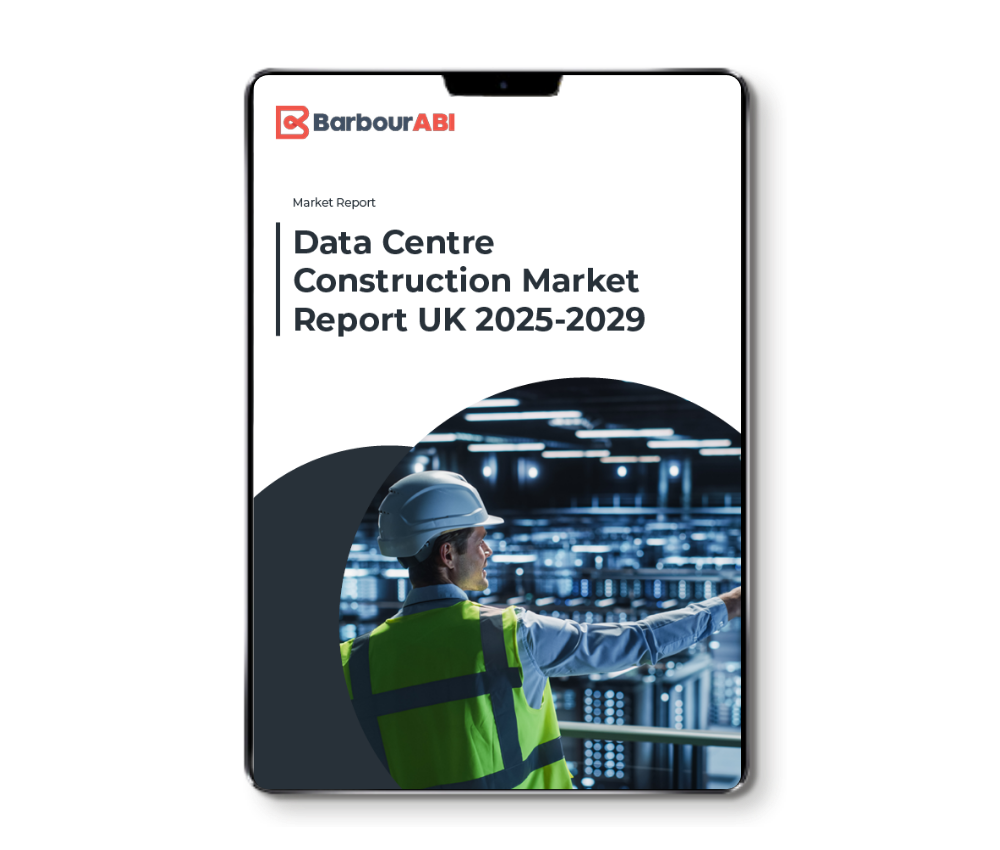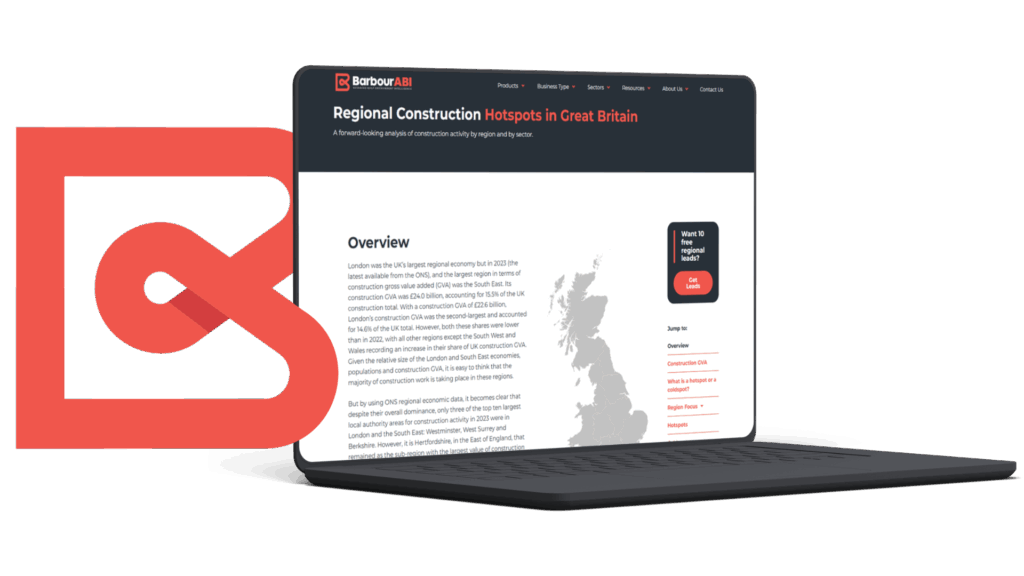The UK data centre construction market is on the brink of a transformative era, driven by rapid technological advancements and an increasing reliance on data. As businesses and consumers alike demand more from digital services, the sector is poised for exponential growth, with projections indicating a potential quadrupling in market value by 2029. This growth is primarily fuelled by the rising demand for Artificial Intelligence (AI), cloud computing, and the Internet of Things (IoT).
Increased demand for edge data centres
One of the most significant trends shaping the future of the UK data centre market is the impact of AI. As AI technologies become more integrated into everyday applications, the need for high-performance data centres is becoming paramount. Operators are investing in huge hyperscale facilities, outside urban areas, designed to handle massive workloads.
In addition, there is increased demand for edge data centres in areas of high population density. These address the need for real-time data processing, bringing computing power closer to users and enhancing service delivery.
Edge data centres are located in close proximity to users to process things like cashless transactions and satnav use. We may increasingly see them underpinning safety critical activity, such as driverless cars and AI-assisted surgery.
Expansion of data centres away from London and the Southeast
While London and the Southeast has long been the epicentre of data centre activity, recent trends indicate a diversification of regional development across the UK.
Areas such as the Northeast, East of England, and Wales are increasingly becoming attractive locations for new data centre projects. This shift is largely driven by the availability of space, lower land costs, cooler climates, the availability of renewable energy sources, and government initiatives aimed at fostering growth in these regions.
The establishment of AI Growth Zones, which streamline planning processes and ensure energy availability, is further facilitating this transition. One such zone, is the in the Northeast of England. Here, at the Northumberland Energy Park in Blyth, is the site of the largest data centre project in the UK planning pipeline. The project, backed by US asset management firm Blackstone, is anticipated to be worth £10bn.
Energy efficiency, renewable power and heat recovery
Sustainability is also at the forefront of the industry’s evolution. Data centres are being recognised as Critical National Infrastructure but, given the vast quantities of energy they require, there is pressure on operators to adopt more environmentally friendly practices.
Many companies are committing to using 100% renewable energy and implementing energy-efficient technologies to reduce their carbon footprints.
The utilisation of waste heat generated by data centres is gaining traction, with operators exploring ways to repurpose this excess energy for local heating needs or to at other times of need.
Equinix have been involved in various approaches to manage this, including Aquifer Thermal Energy Storage, so that summer heat can be used in winter, and using cold water from underground to support chillers in summer.
Other measures include carbon sequestration – for example the data centre planned for Brent Cross in North London by Pure Data Centres will include planting to create the largest green wall in the world.
Modular systems leading to faster construction
As the demand for data processing grows, the market size is expected to grow rapidly, with over £25 billion in investments anticipated over the next five years. This influx of capital is set to transform the landscape of data centre construction, with new projects being introduced at a rapid pace. Key elements that form data centre construction comprise:
- Power, cabling, electrical
- Cooling infrastructure
- Building structure
- Security systems
- Fire protection
The amount of energy involved in power generation, and the importance of sustaining constant operations, means that M&E activities at the construction stage are very important and costly. Estimates suggest approximately 80% of total build costs are associated with M&E plan and equipment.
An increasing focus on modular designs and prefabricated components is enabling faster construction times, allowing operators to scale their facilities in response to increasing demand. Prefabricated modules are used in data centres and range from modular server racks with equipment already fitted from the main hardware manufacturers, through to modular plant rooms, and to complete data centre modules, fully fitted with cooling equipment, power distribution etc.
Using these ‘pods’, data centres can be added to whenever additional space is required with the appropriate services already attached.
Challenges to growth: power, proximity and planning
While the headline story for data centres is one of growth and innovation, the industry does face challenges.
Rising energy costs, availability of energy and land, planning restrictions and a shortage of skilled labour are significant hurdles that could impact the pace of development. These key challenges can be summarised in terms of power, proximity and planning. The need for reliable energy supplies and efficient grid connections is critical. The government’s establishment of the AI Energy Council aims to address these challenges and ensure that energy requirements can be met.
A bright spot on the UK’s construction horizon
Despite the potential pitfalls, the UK data centre market is undergoing a significant transformation, which is likely to have many positive effects – characterised by rapid growth, regional diversification, and a strong focus on sustainability.
As the sector continues to evolve, it will play a vital role in supporting the digital economy and addressing the challenges posed by increasing data demands. With the right investments, innovations, and policies in place, the UK has the potential to become a global leader in data centre infrastructure, paving the way for a more connected and sustainable future.
“The UK data centre market is poised for exponential growth, projected to quadruple in value by 2029, driven primarily by the demands of Artificial Intelligence and cloud computing.
As the industry evolves, regional diversification is taking place, with emerging hubs outside London and the Southeast.There is increasing pressure on data centre operators to create facilities which are as energy-efficient as possible, use renewable energy and partner with nearby homes or commercial operations to re-use waste heat.
Investment in the sector, along with government policy, means significant inward investment is anticipated over the next five years, which will support the sector’s continued growth.”
– David Bains, Editor of the report.
Data Centre Construction Market Report by Barbour ABI
This report provides a comprehensive analysis of the UK data centre construction market, detailing its growth trajectory and key market drivers. It analyses the project landscape, in terms of new build, retrofit and RMI work, as well as the types of data facility, such as hyperscale versus edge centres. It includes a review of key products and systems used in data centres, and their suppliers. Profiles of many data centre operators, owners and construction specialists are included.
Click below to view this report on our store website where you can see an exhaustive list of the table of contents, commentary, and more.


